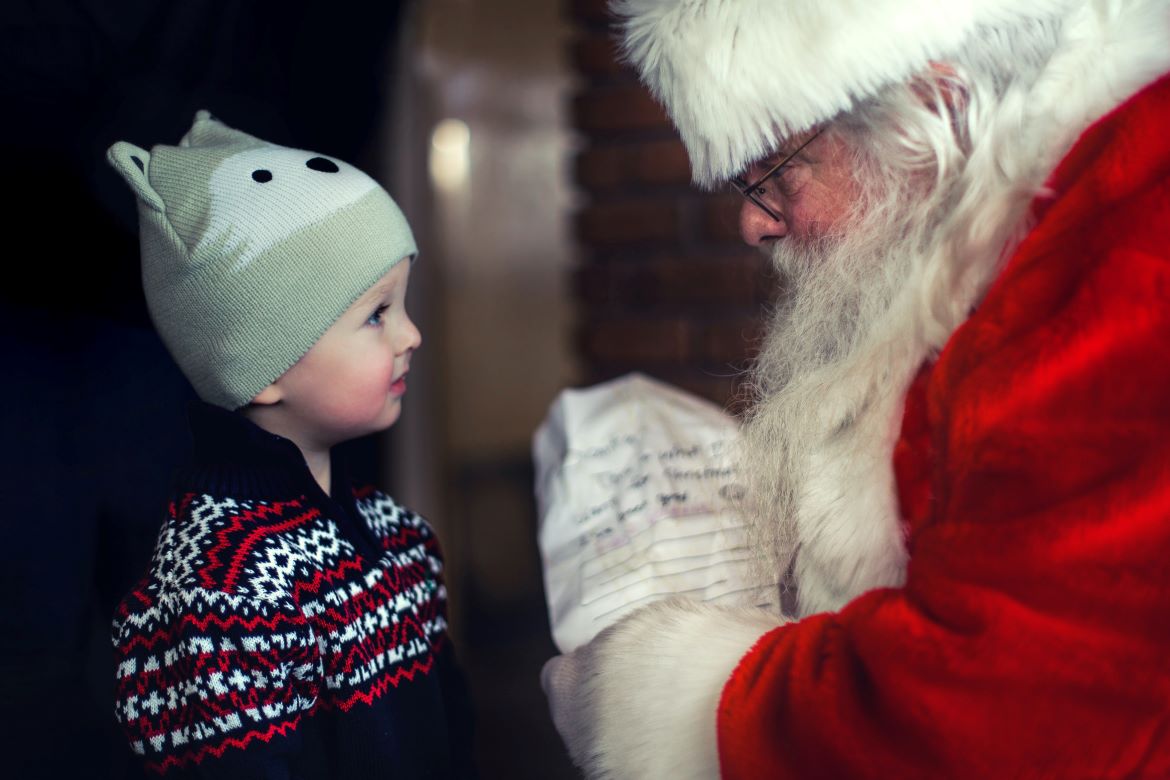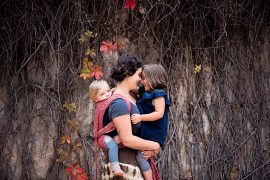By Sarah R. Moore
“Is Santa real?” With that simple question from my child, my heart drops. On one hand, I always and unequivocally want to be honest. On the other, I want to preserve the innocence and magic of childhood.
I sometimes wonder whether my child already knows the answer and is just checking whether I’m being truthful about it. I also wonder whether she wants proof that he really IS real because she sincerely wants to believe in Santa Claus. Both options co-exist in my thoughts as I consider how to respond. Thoughtfully. Carefully.
Is the Santa story even a part of gentle parenting, anyway?
“Is Santa real?” is one of the most loaded questions of parenting.
If we answer that he’s not, it’s the end of a certain kind of innocence: a little bit of childhood traded in favour of one step closer to adulthood.
Stories of Santa Claus, otherwise known as Kris Kringle and Saint Nicholas, have circulated around the world for hundreds of years. Were all those generations of parents wrong?
Believing in Santa is a wonderfully pure part of childhood. At the same time, as part of truly respectful parenting, we wonder if we should be upfront with our children about Santa and Mrs. Claus, the North Pole, reindeer, elves, and all things jolly-Christmas. Certainly most kids believe – but should mine, too?
Here’s how we handled Santa Claus in my home
Early on, I decided that I didn’t want to mislead my child. Although I’d loved the magic of Christmas when I was little, I wanted my relationship with my daughter to be based on honesty and transparency about everything. No exceptions – just straight-up loving and gentle truthfulness.
Therefore, I decided I didn’t want to tell her about Santa. We’d just do our “thing” every December, celebrating the true meaning of Christmas for our family, and that would suffice. We’d navigate the trickier waters as she grew older.
My husband and extended family weren’t on board with that, however. They wanted her to know Santa: to love him, like we all did when we were children. Truth be told, I have fond memories of sitting on the sofa next to the Christmas tree, staring at my empty fireplace, wondering if I’d be witness to Santa’s appearance.
I liked putting out a bowl of sugar and some carrots for the reindeer, and adding some sugar cookies for the guest of honour. It was fun to see the reindeers’ “nose prints” in the sugar the following morning and the cookie crumbs upon the plate.
Remembering these things, I altered my plan.
I decided we’d wing it year by year. We’d also be intentional about which parts we’d “wing,” however.
1. We could be “a” Santa to others, instead of talking about “the” (implied one-and-only) Santa Claus
When my daughter was very little, I started engaging her in “being” a Santa Claus for someone else. To be clear, I never flat-out told her that Santa wasn’t real. I simply didn’t comment one way or the other, and “playing” Santa Claus for others seemed like a good way to gently and oh-so-gradually clue her in while helping her learn the importance of doing good deeds for others.
With this approach, starting when she was about two and every year thereafter, we’d pick strangers for whom we’d plan to do a random act of kindness – an elderly neighbour, someone requesting a donation of food or supplies – and then we’d follow through in helping that person somehow. I called it “being a Santa” and explained it as the goodness of doing acts of service for others without expecting anything in return.











